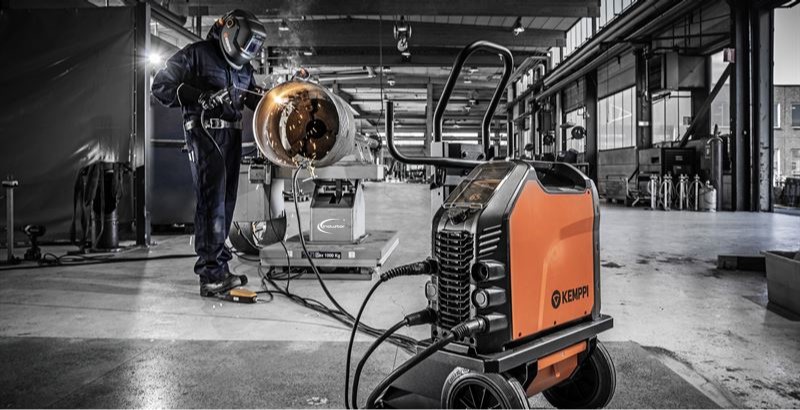KEMPPI welding work safety offer!

Why are the prices different for welding respirators? The main reason is the performance of the system, and it affects several areas - safety and compliance with standards, specifications, as well as usability and comfort. For example, the primary value of wearing a respirator is lung protection. Lower priced PAPR units tend to have a higher internal leakage rate, meaning a higher level of unfiltered air enters the breathing zone.
PAPR or supplied air respirator?
Health and safety regulations and welding environments can vary greatly, so always check with your local safety professional before starting work. The best way to choose the right respirator is to first measure your local air quality with an independent and qualified testing facility and know the pollutants present. This analysis can be performed by a local expert service provider. Welding should always be done in a well-ventilated area in areas where oxygen levels exceed 17% by volume. Certified motorized air-purifying respirators and supplied air respirators provide effective protection in a wide range of welding environments where fume and gaseous contamination remain within the operating range of the device and occupational exposure limits (OELs) set by the Health & Safety Executive or equivalent national authority. Never use a welder's respirator in an atmosphere that poses an "immediate threat to life or
Health' (IDLH). Air respirators must be used in closed welding environments where gases such as argon, helium, C0₂ or carbon monoxide may accumulate.

Isn't it cheaper to buy disposable welder face masks?
Disposable welder face masks are a cheaper option if you only weld occasionally. However, professional welders and fabricators typically use 1 disposable mask per day and over time this cost would add up and outweigh the investment in a quality PAPR or supplied air system, including replacing maintenance filters.

Do welder respirators filter ozone gas?
Ozone is a naturally occurring gas in the upper and lower atmosphere, however, in the welding environment, it can be produced to a greater or lesser extent by ultraviolet radiation from the rupture of the welding arc.
down molecular oxygen. Generally, welders' respirators do not "filter" ozone in the same way they protect us from welding fumes and airborne particles, but rather a process that converts back to oxygen.
Has a positive effect because the ozone gas comes into contact with and acts on hard surfaces such as the particulate filter substrate and the hard plastic surfaces of the PAPR respirator, air tubes and diffuser.
Gas filters such as the Kemppi A1B1E1 gas filter are filled with tightly packed carbon granules and are more effective at speeding up the conversion process and are therefore more suitable for areas where higher concentrations may occur from higher welding currents and productivity.
Kemppi_safety_catalogue_2023_EN.pdf
No comments
Leave a reply
Cart
Cart is empty.
